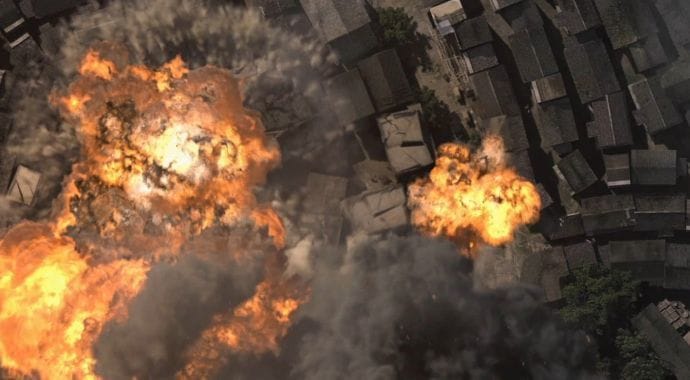We talk to Kevin Margo, creator of the revolutionary short film CONSTRUCT.
To describe “CONSTRUCT” as a short film feels like a disservice. Yes, it’s a 10-minute tale of suspense and deception on an android-powered construction site – but it’s also a production that is pushing technology forwards. So far in fact, that the techniques employed promise to change how visual effects are produced forever. This small film is powered by big ideas.
“We’re rendering everything on the GPU,” explains Kevin Margo, “CONSTRUCT” creator. “For a production-quality short film, this method is unheard of.”
We’re bringing real-time ray tracing into a motion capture setting, so that when the actors perform on stage, we can be filming them and see V-Ray path tracing inside MotionBuilder. This lets us visualize the performances on these digital models with the lighting and shading that V-Ray offers at interactive frame rates.
This new way of visualization has the potential to revolutionize Hollywood. Even the most technophobic of directors can finally see almost exactly how an effects shot will look in the finished film, rather than having to wait months for postproduction. Without those hours waiting in the wings, the entire production cycle of effects-based films will change, adapting into a new normal that is faster and more efficient.
Unsurprisingly it’s attracted the attention of Hollywood, which is ever eager to find more efficient pipelines. One of its biggest proponents has been Douglas Trumbull, the man responsible for the eye-popping optical and miniature effects in “2001: A Space Odyssey”, “Close Encounters of the Third Kind” and “Blade Runner”.

“Trumbull’s whole thing is, ‘How do you create the biggest, baddest, grandest theatre experience imaginable?’” explains Kevin. “With modern technology he got really interested in seeing how you could take advantage of all this potential and turn it into a better cinema experience. He came up with a way of achieving 120 temporal samples for 60 frames per second per eye, so the viewing spec is 4K, 60 frames per second per eye in stereo.”
Termed MAGI, Trumbull’s tech proved a perfect fit for Kevin’s CG world of “CONSTRUCT”. Together, the pair collaborated on rendering the “CONSTRUCT” teaser to MAGI specifications - a feat, which would have been impossible without help from NVIDIA and Chaos Group. “It was an insane amount of pixels to render,” says Kevin. “We did some math, and one minute of ‘CONSTRUCT’ at Doug’s MAGI spec is equivalent to 20 minutes of typical 2K mono feature film. It’s a lot of rendering - and GPU rendering is the only real way to achieve it. Using NVIDIA’s cluster, we rendered it in one week.”
The NVIDIA cluster was another key component in helping “CONSTRUCT” achieve its ambitious production goals. The graphics chip company’s render farm consists of about 150 GPUs stored in a number of NVIDIA Visual Computing Appliances (VCAs), which are stored in a render farm in Santa Clarita, about 30 miles from Blur Studio’s headquarters in Culver City. Thanks to the wonders of broadband, distance wasn’t a limiting factor, enabling Margo to render "CONSTRUCT" live and on location.
“We were sending the updated data from MotionBuilder in real-time up to NVIDIA’s GPU farm, rendering those updates at 24 frames per second, and then streaming them back down to my virtual camera that I had in the motion capture volume,” Kevin explains. “There was probably a couple hundred milliseconds delay between the performer doing his thing and me seeing the movement on the virtual camera. It’s noticeable but not crippling.”

“It’s almost like, at the end of the day, it will be an afterthought of all this stuff,” he says. “Not to diminish the short film itself, but it’s really opened my eyes to how much more possibility there is with GPU and cloud rendering.”
Kevin is confident that he’ll finally be able to put the finishing touches to the film soon, too, with seven-and-half minutes of the projected ten in the can. “Even with all this awesome render power, it’s still an immense undertaking that requires a lot of artist time and energy,” he explains. “This is kind of a side project - it’s a lot of friends’ nights and weekends outside of work doing their thing. The process has been great and I’m looking forward to seeing where it takes us.”
Learn more at: constructfilm.com








